These sourdough pretzel croissants, made with sourdough instead of yeast, are buttery, flaky, crispy, and light and melt-in-your-mouth.

The monthly challenge for the Sourdough Surprises Baking Group is croissants. I made pretzel croissants with yeast earlier this year and enjoyed them a lot. For this bake, I decided to see how the pretzel croissants would perform using sourdough instead of yeast.
The timing of this challenge worked out well. My oldest son came into town this past weekend. He loves rolls so I wanted to make sure these were ready while he was here.
Relax when you make these Sourdough Pretzel Croissants
I started the process Friday morning before work and completed the croissants Sunday afternoon.
The last time I made the yeasted version of these croissants, I was a bit grumpy and rushed. This time, I was calm, relaxed, and totally in control of these croissants and they performed beautifully.
My son and his girlfriend enjoyed the rolls. They both said they tasted like pretzels. This was before I even mentioned that they were in fact, pretzel croissants.

When you review the time required to make these croissants, three days may seem daunting, but it’s not. I was able to fit these croissants into my schedule even though I was gone for several hours on Saturday. If I can do this, you can too!
Using the sourdough starter made the dough fairly stiff, but that worked out well. It didn’t tear during the whole process and didn’t negatively affect the final result. I think the sourdough enhanced the rolls. These croissants are buttery, flaky, light, and crispy and just right in my opinion.
Suggested timing for making these Sourdough Pretzel Croissants
I started the process Friday morning before work and finished baking the rolls Sunday afternoon. Feel free to adjust the following schedule to suit your needs.
- Morning 1st day: Feed sourdough starter.
- Evening 1st day: Prepare the dough and place in the refrigerator until the next afternoon (18 hours).
- Morning 2nd day: Make the butter block and place in the refrigerator for several hours until ready to roll out dough.
- Afternoon 2nd day: Prepare the baked baking soda. Complete 3 turns and place the dough in the refrigerator overnight.*
- Afternoon 3rd day: Roll out, shape, and bake croissants.
Other options (edited Dec 2022)
- On Day 2, complete 3 turns, place dough in the refrigerator for at least 2 hours, and then continue to the shaping and baking phase instead of placing dough in the refrigerator overnight.
- Or, if it fits better with your schedule, on Day 2, complete 3 turns, place the dough in the refrigerator for at least 2 hours, continue to shaping the rolls, and then place the shaped rolls in the refrigerator overnight. The next day (Day 3), dip the croissants in the baked baking soda and bake.
I utilized the second option during the Holidays. I transported the shaped rolls to my destination, and then dipped them in the baked baking soda (which I had prepared the evening before) and baked them. We had warm and flaky croissants for dinner and most of the prep work was done ahead of time.

Edited (Dec 2022):
After making these croissants several more times, I updated the ingredients and instructions.
I reduced the amount of sourdough from 1 cup to 100 grams (~1/3 cup + 1 Tbsp.). I also used cold milk instead of warm milk to keep the dough cold so the butter doesn’t get too warm.
Print
Sourdough Pretzel Croissants
- Total Time: 24 - 72 hours
- Yield: 1 dozen 1x
Description
These Sourdough Pretzel croissants are buttery, flaky, crispy and light, and just right.
Ingredients
Dough:
- 100 grams (1/3 cup + 1 Tbsp.) sourdough starter
- 120 ml (1/2 cup) cold milk (dairy or non-dairy)
- 3 Tbsp. firmly packed brown sugar (golden or dark)
- 410 g (3-1/4 cups) unbleached AP flour + more for sprinkling
- 2 tsp. fine sea salt
- 1 ounce (2 T) unsalted butter, cubed, cold
- 2–3 Tbsp. cold milk or water, if necessary
Butter block:
- 340 g (3 sticks / 12 ounces / 24 Tbsp.) cold unsalted butter
- 2 Tbsp. unbleached all-purpose flour
Finish:
- 60 grams (1/4 cup) baked baking soda ** (see notes for method)
- 1 egg yolk beaten with 1 Tbsp. milk
- coarse salt, optional
- sesame seeds and/or poppy seeds, optional
Instructions
Day 1 (Morning): Feed your sourdough
- Feed your sourdough starter and let it rest 4-6 hours, or longer, until fully active
Day 1 (Evening): Prepare the dough
- Whisk the flour, brown sugar, and salt in a large bowl. Use your fingertips to rub the butter into the flour mixture, breaking it up into tiny flour-coated pieces the size of breadcrumbs. Stir in the sourdough culture and milk using a wooden spoon or rubber spatula to form a shaggy mass.
- Turn the dough out onto an unfloured work surface and knead eight to ten times, until all of the flour is just incorporated. You don’t want to over work it, because you don’t want the butter to melt too much. The dough will not be a smooth mass; you will see some flecks of butter. It should be soft and tacky, but not sticky. Adjust as needed with flour or water.
- Place the dough in a large, clean bowl. Cover with plastic wrap. Place in refrigerator for 8 to 24 hours (24 will give you the best flavor).
Day 2 (Morning): Make the butter block
- Knead the butter and flour together using your hands until it forms a smooth mass. This will take a couple of minutes. The butter should be pliable. You can use a stand mixer, but make sure you don’t beat any air into the butter or melt it.
- Spread the butter between 2 large sheets of plastic wrap (or parchment or wax paper), and use a rolling pin to shape into a rectangle that is about 8″x9″. Use a straight edge to form corners, but work quickly as you want the butter to stay cool. Wrap in plastic and refrigerate until you’re ready to roll out the dough.
Day 2 (Afternoon):
First turn:
- Scatter a little bit of flour on your work surface, then turn the dough out onto it. Roll it out into a rectangle that is 10″ by 15″ and about 1/4″ thick. Using your hands, gently pull and stretch the dough to form straight edges and sharp corners. Brush excess flour off of the dough. Set the dough with a long edge facing you.
- Mentally divide the dough into 3 equal portions. Place the butter block over the right 2/3 of the dough, leaving a 1″ border on the outer edges. Fold the empty left portion of the dough over the middle third. Now, lift and fold the right section of dough over that. You should have 3 layers of dough that encase 2 layers of butter. Pinch the outsides and the seams together and lightly press the layers together using a rolling pin. This completes the first turn. Wrap in plastic and refrigerate for 1 hour.
Second turn:
- Remove the dough from the fridge and set it on your lightly floured work surface. Roll dough out into a 10″ by 20″ rectangle, pulling and stretching to form straight edges and sharp corners. Brush off any excess flour. Set the dough with a long edge facing you. Fold both of the short ends in to the center, leaving a 1/4″ gap where they meet (think of a book jacket). Fold one side of the dough over the other. Lightly press the layers together using a rolling pin, and square and sharpen the edges and corners. This completes the second turn. Wrap in plastic and refrigerate for 1 hour.
Third (and final) turn:
- Lightly dust your work surface and the top of the dough with flour. Roll dough out into a 10″ by 15″ rectangle. Do another trifold, as done in the first turn (mentally divide into thirds, then fold one third over the center, followed by the last third). Square the edges and sharpen the sides; wipe off excess flour. Wrap in plastic and refrigerate for at least 2 hours, but up to another 24 hours.
Make ahead and freeze dough for later:
- If you want to save the dough for later, wrap it tightly in plastic wrap, slide it into a freezer baggie, and freeze for up to 1 week. Defrost overnight in the refrigerator before proceeding to final shaping.
Day 3 (Afternoon) Final shaping:
- Line two rimmed baking sheets with parchment paper and set aside. (You will need rimmed baking sheets to capture the melted butter.)
- Lightly dust your work surface and top of your dough with flour. Roll dough out into a 15″ by 18″ rectangle (~1/4″ thick). Pull and stretch to form straight edges and sharp corners. Patch any holes where butter may have popped through by dusting them with flour. Brush any excess flour off the dough.
- Cut the rectangle in half widthwise, creating two 15″ x 9″ sheets of dough. Using a pizza cutter or bench scraper, cut each piece of dough into three equal strips, the short way.
- Cut each strip in half diagonally, so you have 6 triangles. Repeat with other piece of dough for a total of 12 triangles.
- Beginning at the base, roll the triangles up, tugging on the tip to elongate it slightly, then gently pressing it into the dough.
- Place on the prepared baking sheets with the tips tucked under, and curve the ends to form crescent shapes. Cover the croissants with damp, clean kitchen towels and allow to rise at cool room temperature until they have almost doubled in size and feel spongy, ~2 hours.
- Slide the croissants into the refrigerator for 20 minutes while you prepare the dipping solution.
- Preheat oven to 425° F, positioning one rack in the upper third of the oven, and one in the lower third.
Prepare the dipping solution:
- Add the baked baking soda in 8 cups of cold water and stir until completely dissolved. One by one, dip the croissant dough into the dipping solution, allow the excess to drip off, then set back on the lined trays.
Finish them off:
- Brush the tops with the egg wash, then sprinkle with coarse salt and sesame seeds or poppy seeds, if using.
- Slide into preheated oven immediately and bake for 14-18 minutes (rotating pans from front to back and top to bottom halfway through), until they are deeply browned, crispy, and flaky. They should feel light and airy if you pick them up.
- Transfer to a wire rack to cool for 10 minutes before serving. They are best enjoyed the day they are made, ideally warm from the oven. Store any extras in a paper bag for a day. You can reheat them by placing them in a 350° F oven for ~5 minutes.
Notes
Adapted from Pretzel Making at Home by Andrea Slonecker
** Baked baking soda is an alternative to working with lye that still lends pretzels a dark, burnished crust.
To make the baked baking soda, spread 1/4 cup (~70 grams) of baking soda out on a baking tray lined with parchment paper or foil (or in a pie pan). It will decrease in weight, but shouldn’t decrease in volume. Slide it into an oven that has been preheated to 250° F/120° C and bake for 1 hour. Cool completely, then store in an airtight container at room temperature.
Notes about timing: The dough takes from 24-48 hours from the start to the time you bake the croissants.
The butter block should be formed sometime while the dough is rising.
The baked baking soda needs 1 hour in the oven. It can be prepared on the final day or whenever is convenient.
- Category: Croissants
- Cuisine: Bread

I like this method for making croissants. I was able to fit it perfectly with my schedule and have the croissants ready when my son was home. This way, I made sure I didn’t eat them all myself.
Happy Baking!
Cathy
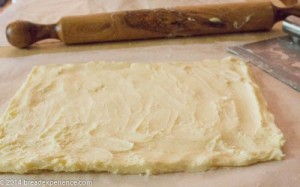
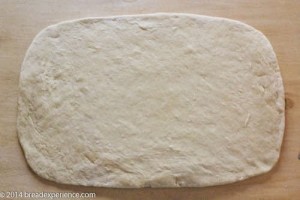
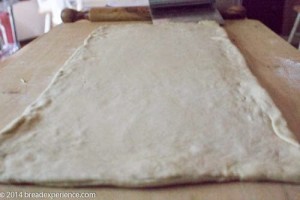

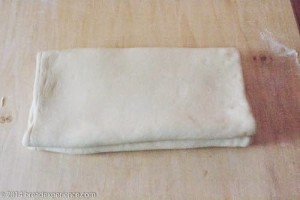
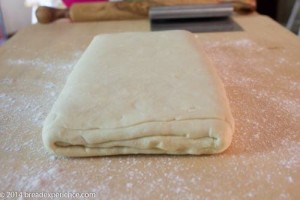
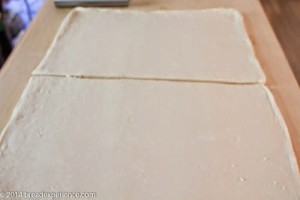
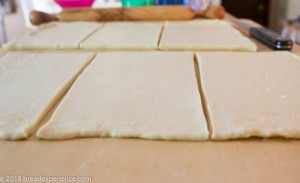
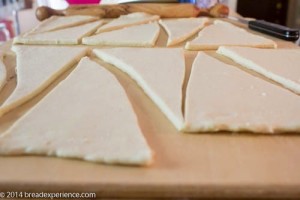

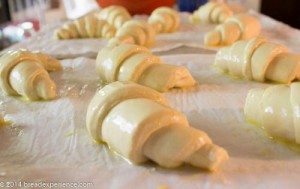


ldgl0710 says
Oh. Wow. This is the first post I’ve gotten from you since signing up to follow by email. These look fabulous! Can’t wait to wade around in this blog!
Cathy W. says
Thanks for following my blog. I do hope you enjoy it. Happy Baking!
Rebecca says
Wow, that’s fascinatng! I’m always afraid to move my croissants around much after proofing let alone thinking of dunking them in a solution. I do love a pretzel though, so maybe I will get brave with the half a batch I froze.
Cathy W. says
These worked fine being dunked in the solution after proofing. You ought to try this method sometime.
shelley c. says
Pretzel. Croissants. Genius. Seriously going to try these!!!
Cathy W. says
You do need to try them. They are really really good!
Gingered Whisk says
Awesome job! Your croissants look great! Love that you made them pretzel!!!
Cathy W. says
Thanks for the challenge! This was fun!
Kelster says
Pretzel croissants sound pretty awesome.
Cathy W. says
Thanks! I love this combination.
Korena says
These look totally delicious!
Cathy W. says
Thanks Korena!
Sleepy says
Luckily this post came just after i’d finished eating my first batch of your beer pretzel croissants…well done 🙂
Cathy W. says
Thanks! These turned out even better although I didn’t use beer in either one.